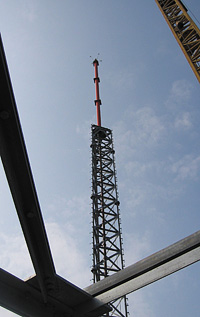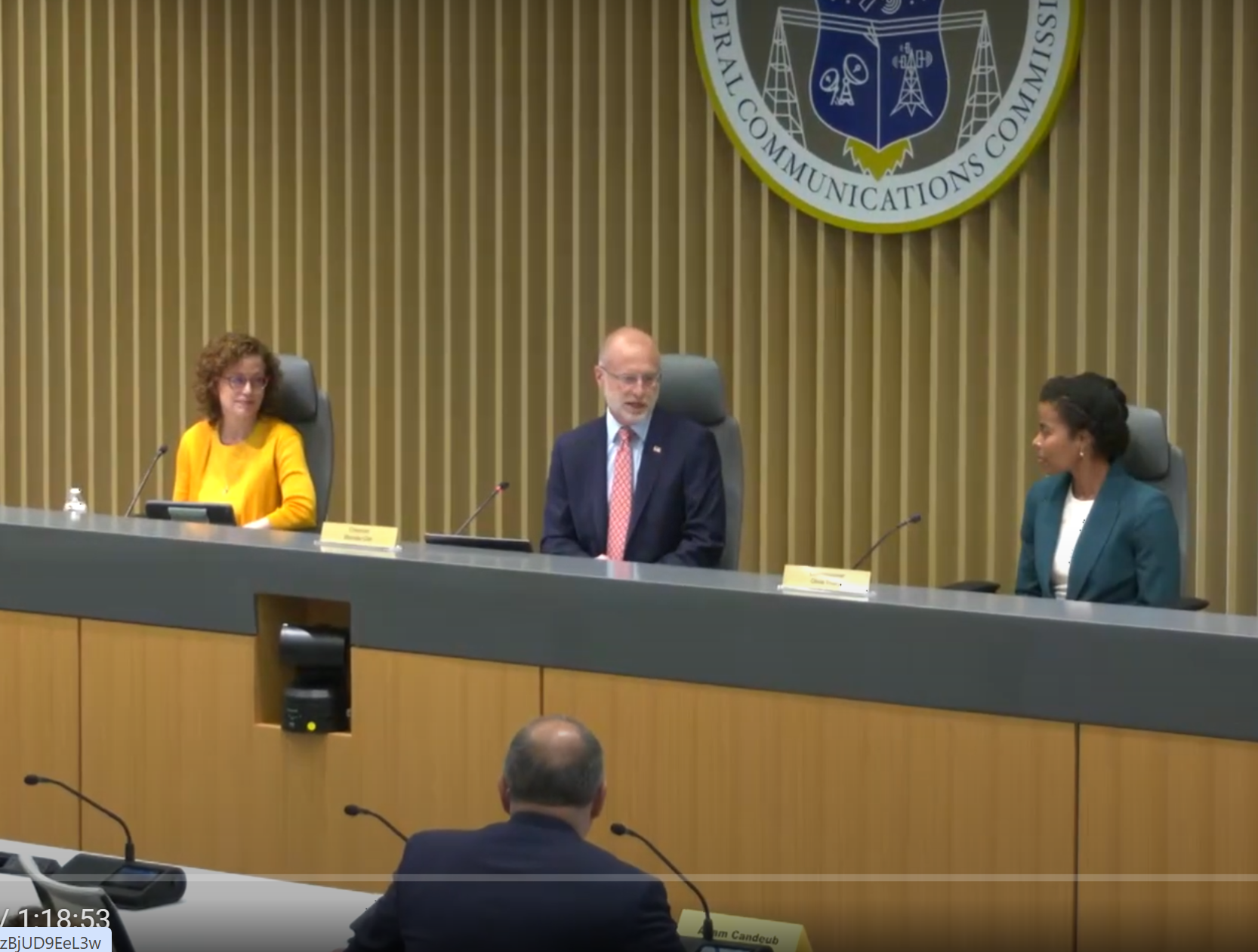Working for a Painless Transition
ALTON, N.H. Less than three months from the Feb. 17 switch-off of full-power analog television in the United States, the decade-long effort is nearing completion. Although most broadcasters are ready, it's also clear that the industry is working steadily to ensure that the switchover is smooth and on-time.
For many broadcasters the switchover involves turning off the analog transmitter at midnight on Feb. 17. These stations have been operating for up to 12 years on their final digital channel and many have already reached their maximum authorized power, so no work remains on the digital side.
However, 642 stations are moving to a different DTV channel for operation after the transition, so efforts remain to get their transmission plants ready.
MANAGING THE REST

A top-mounted, omnidirectional ERI TRASAR traveling wave UHF DTV antenna was installed at the Richland Tower facility in Oklahoma City for KTUZ-DT, Channel 29. Ion Media Networks and Gannett Broadcasting have cooperated on a novel solution to Ion's final digital channel in Washington, D.C. Ion is changing from channel 43 to channel 34, which is currently the channel used by Gannett for their digital signal. When Gannett reverts to channel 9 on Feb. 18, Ion will take over Gannett's channel 34—by literally taking over Gannett's channel 34 transmitter and transmitter site.
David Glenn, president of engineering for Ion Media Networks, said the cooperation with Gannett is an example of a creative solution for some digital transition issues. However, he also said that the analog switchover is "proving to be more challenging than we had planned, even though we had planned for a difficult time. We scheduled everything early. We met with the manufacturers and riggers and had timetables for everything. But the closer the transition approaches, the tighter the squeeze gets.
"We have no real issues at this point," he added, "but there is tight timing for getting RF components and we can't order elbows and interconnects until the transmission line and antenna are in place. So the RF system manufacturers are tasked with heavy loads to get things done."
Myron Fanton, chief engineer of RF technology for ERI, a Chandler, Ind.-based provider of broadcast antennas, said that strong project management is key to ensuring that unforeseen problems don't cascade into delays. "We make sure that we are on top of these issues every day, managing the schedules, making sure people are on site to offload trucks when they arrive, coordinating power crews—it all requires constant attention."
As of October, Roger Cote, vice president of sales and marketing at Dielectric said they were still receiving orders for RF systems requiring January deliveries. "Customers who do have their digital equipment in place need to make sure that everything works well prior to going live," Cote said. "Some may find performance characteristics that are different from what they expected."
Transmitter manufacturers are concentrating on keeping up with the demand for new and reconfigured transmitters. "Border issues and other interference questions have delayed building out some facilities, making this last minute work challenging," said Jim Adamson, vice president of sales and marketing for Lafayette, Colo.-based transmitter provider Larcan.
Availability of experienced installation crews is the top concern for transmitter makers. Many are rotating factory personnel out to the field through the February transition. In addition, "we're increasing our capacity through grouping installations by regions and by bringing in contract crews that are experienced with Harris transmitters," said Paul Ratcliffe, director of the transmitter product line at Harris Broadcast. "By supplementing these contract crews with our internal resources, we have been able to handle the demand."
Dick Fiore, senior director of sales for transmission and mobility for Thomson Grass Valley, said that their biggest concern is sufficient staffing for field operations. "We've been working with customers and the RF system manufacturers for 18 months to prepare for the final transition to digital. That advanced effort has been a critical part of our success in managing the transition."
Mike Rosso, vice president of sales for Axcera said they're adjusting their workforce to deal with the crunch. "The industry is challenged to fully support stations," he said. "We also build S band and L band transmitters, so we can move people from one market to another when a market spikes. Now, we're moving people into the VHF transmitter area to support customers going back to VHF for their final digital channel."
WHAT HAPPENS FEB. 17?
Many broadcasters and manufacturers plan to have a large number of people in the field to support the Feb. 17 transition. "We have been working on this for a long time and we don't need to ask everyone to be available," Glenn said. "They want to be there for the switchover."
Yet concerns remain. Earle Connors, director of engineering for the Oklahoma Educational Television Authority, notes that many rural cable television systems have not yet upgraded their headends to receive digital TV channels. Connors is also concerned about some new set-top boxes.
"We've received more than 100 phone calls from people having problems with new DTV convertor boxes," he said. "Many of the boxes do not pass analog, so people can't view their analog channels today. In other cases, the boxes do not appear to have the receive sensitivity of their analog TV sets, requiring more substantial outdoor antennas to receive the digital signals."
After years of operating dual analog and digital facilities, many broadcast engineers are looking forward to operating just their digital infrastructure. However, some broadcast stations will continue to have significant transition efforts after February.
"Quite a few of our stations have been granted maximization, so we will be running around to stations after February to increase power," said Steve Hastings, network RF manager for the Trinity Broadcast Network. "We're also converting some of our analog transmitters to digital and moving them into redundancy roles."
Larcan's Adamson remains confident, about the industry's readiness. "Broadcasters have done a stellar job responding to the challenge and the vast majority will be ready," he said.
The professional video industry's #1 source for news, trends and product and tech information. Sign up below.
